 |
| This post is about how I freeze rosemary and thyme from my garden to use in the winter. |
Even though it's still quite warm in Utah, I can feel the nights getting a bit cooler, and I know it's not that long until the garden goodness has to either be preserved or lost. I hate losing anything that comes from my garden, and try to freeze as much as possible. Since I have lots and lots of herbs, a few years ago I started to experiment with freezing them to see if I could preserve the flavor enough to make it worthwhile to use the herbs in the winter. I'm no expert, but I've learned a few tricks.
If you're going to try freezing herbs, first it helps to understand the difference between soft herbs and hard herbs. A while ago Helen from Beyond Salmon wrote an excellent post on preserving and using herbs in which she explained this quite well. Basically soft herbs are things like basil, cilantro, parsley, oregano, and mint which are either eaten raw or added only for a few minutes of cooking. I've written earlier about how to freeze fresh basil, and I suspect that many of the other soft herbs can be frozen that way also, although basil combines especially well with the olive oil.
Hard herbs are things like rosemary, thyme, savory, and sage which are suitable for long cooking times. The two things from this list that I've had great luck freezing are rosemary and thyme. I actually discovered how to do this somewhat by accident when I cut the branches off my rosemary and thyme bushes one fall and didn't have time to pick the leaves off. I washed the herbs, then put the stems into a ziploc bag and put it in the freezer, not sure what would happen.
I was delightfully surprised when the frozen leaves fell off the stems, and even happier when I tried using some of the frozen rosemary and thyme leaves and discovered they were nearly as good as fresh. Try this if you have rosemary and thyme in your garden and live where there's a cold winter, and I think you'll like the result.
I was delightfully surprised when the frozen leaves fell off the stems, and even happier when I tried using some of the frozen rosemary and thyme leaves and discovered they were nearly as good as fresh. Try this if you have rosemary and thyme in your garden and live where there's a cold winter, and I think you'll like the result.
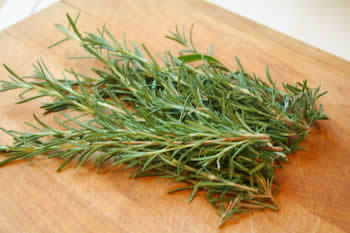 Cut some rosemary branches.
Cut some rosemary branches.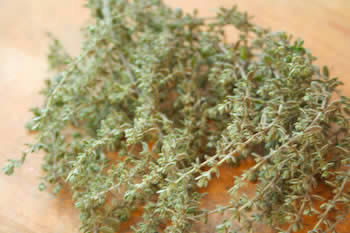 Cut some thyme branches.
Cut some thyme branches. Herbs should be washed in cold water and
either spun dry or blotted dry with paper towels.
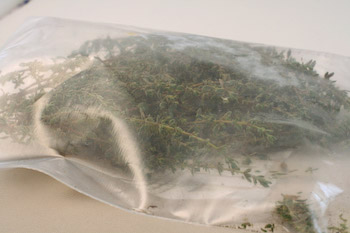 Use a separate Ziploc bag for the thyme.
Use a separate Ziploc bag for the thyme.Let thyme and rosemary stay in the freezer for several weeks.
After a few weeks, take ziploc bag out of the freezer and use a rolling pin to roll over the bag containing the herbs. You should see a significant amount of leaves come loose from the stems. If some leaves don't come off, you can remove the loose leaves and freeze the others a bit longer, or pick the rest off by hand.
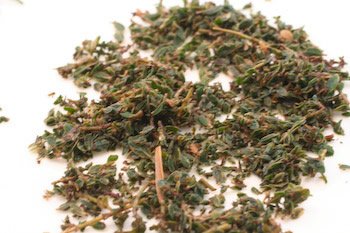 Thyme is a bit more fragile than rosemary, but this thyme is
Thyme is a bit more fragile than rosemary, but this thyme isstill great after nearly a year in the freezer.
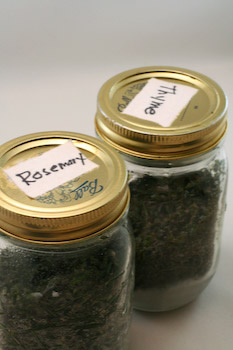 After I've separated the leaves from the stems, I like to store my
After I've separated the leaves from the stems, I like to store myfrozen herbs in canning jars which have a lid that seals well.
This keeps moisture away from the herbs.
(The jars go back in the freezer.)
That's how easy it is to preserve the rosemary and thyme from your garden to use in wonderful soups and stews all winter long. Use the frozen leaves in any recipe calling for fresh rosemary or thyme. For recipes created using dried thyme or rosemary, use about twice as much of the frozen herbs as you would the dried version.


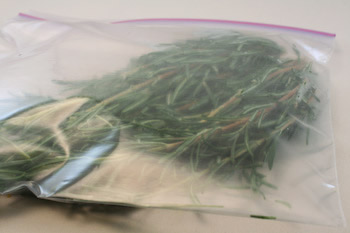
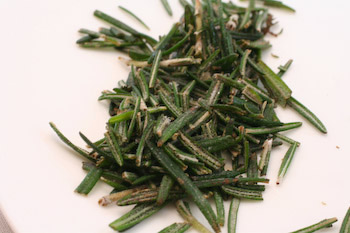
No comments:
Post a Comment